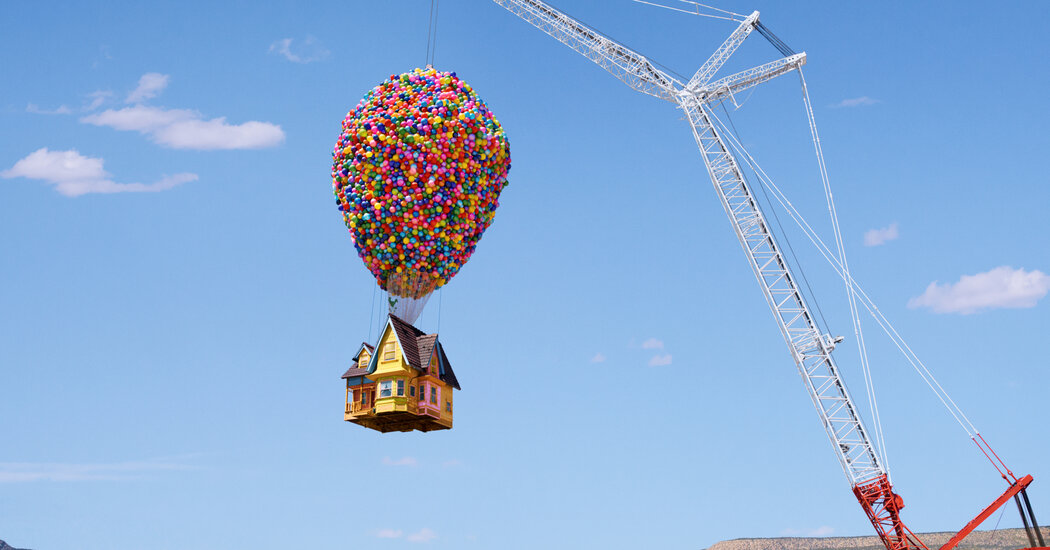During California’s most recent drought, officials went to great lengths to safeguard water supplies, issuing emergency regulations to curb use by thousands of farms, utilities and irrigation districts.
It still wasn’t enough to prevent growers in the state’s agricultural heartland from draining dry several miles of a major river for almost four months in 2022, in a previously unreported episode that raises questions about California’s ability to monitor and manage its water amid worsening droughts.
It’s not uncommon, during dry spells, for farmers and other water users in California to draw streams down to a trickle in places. But the severity and duration of the 2022 decline of the river in this case, the Merced, where one stream gauge showed zero water moving past it nearly every day from June to early October, stood out even to experts.
“I was very surprised to see a river of this size without water,” said Jon Ambrose, a biologist with the National Oceanic and Atmospheric Administration’s fisheries service who visited the Merced’s parched riverbed that August. “This just isn’t something we see. This isn’t something that should be seen as normal.”
The Merced River originates in Yosemite National Park. It rushes through glacier-carved canyons and winds for about 60 miles through the Central Valley before pouring into the San Joaquin River, which nourishes the valley’s southern half.
California’s main water regulator, the State Water Resources Control Board, learned of the lower Merced’s bone-dry conditions in late October 2022, only after they had started to ease, Erik Ekdahl, the board’s deputy director in charge of water rights, said in an interview this week.
In investigating the matter, the board has so far found that the river most likely went dry as a result of people taking water legally, Mr. Ekdahl said. In other words, local farmers do not appear to have violated the board’s drought controls that year by slurping up every last drop.
“That is where the layperson would immediately go, ‘Well, how is this allowed to happen?’” Mr. Ekdahl said. The reason, he said, is that in droughts, California’s water system is geared more toward protecting water users’ rights than helping the environment. In general, “you can take the water that you’re authorized to take under your permit or license until you’re expressly told not to.”
California became an agricultural powerhouse by taming its rivers and parceling out their flows. But as the warming climate intensifies the state’s cycles of flood and drought, its system for apportioning water is under strain.
The state grants a high degree of privilege to senior users, or those who have been taking and using the rivers’ flows for a long time. This has helped encourage large investments in irrigation. Now, though, virtually every drop has been claimed for one purpose or another, and officials are finding it increasingly challenging to manage supplies and protect the environment without harming the interests of long-established growers and other users.
California was in its third-straight year of drought in the summer of 2022 when staff members with NOAA Fisheries and the state’s Department of Fish and Wildlife found miles of the lower Merced severely dry. The upstream part of the river was still flowing robustly, stream gauges showed. But by the time it neared the confluence with the San Joaquin, it had become a series of intermittent pools, imperiling threatened fish species including steelhead and Chinook salmon.
“Our species are on the brink of extinction,” said Monica Gutierrez, a biologist with NOAA Fisheries who visited the Merced that August. “We can’t afford to have another year of a dry riverbed.”
According to state data, the water users on the lower Merced include dairies, almond growers and vineyards that are part of E. & J. Gallo Winery, which calls itself the world’s largest family-owned wine and spirits company. A Gallo spokeswoman declined to comment.
California’s drought controls in 2022 cut supplies to many water users in the San Joaquin watershed, but not all of them. Many of the most senior users, or those claiming to have been using water for the longest time, weren’t cut off.
Even if the state water board had learned of the Merced’s withered conditions earlier that summer, it might still have taken months to enact new regulations to protect the river, Mr. Ekdahl, the board official, said. Imposing new rules to stop it from going dry in the future would also be a long and involved process, he said.
“A dry river is a catastrophe,” said Keiko Mertz, policy director for Friends of the River, a conservation group in Sacramento. “The water board should anticipate, manage and prevent this from happening.”
California’s water board doesn’t have the staff it would need to monitor river levels statewide, said Nell Green Nylen, a water policy researcher at the University of California, Berkeley. As a result, she said, “I would guess that there are smaller streams all over the state, and maybe even some larger ones, that have things like this happening all the time.”



